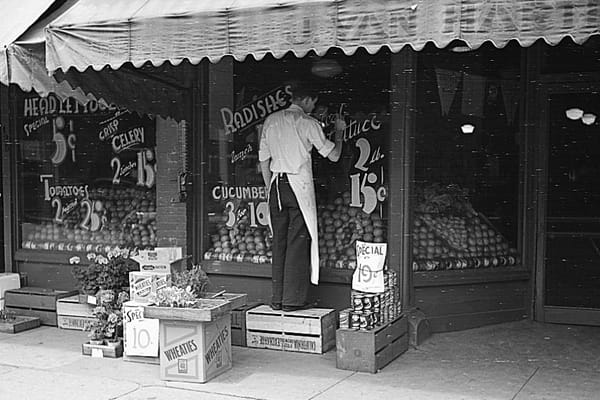What Planners Know vs What Planners Do

Why talk about what urban planners know instead of what they actually do? Because more often than not, those two things do not align. To understand that gap, it helps to look first at the system planners work within.
Most planners in the United States work within one of the country’s 89,000 local governments, each with its own set of rules, politics, and funding constraints. It is a slow-moving system shaped by history, bureaucracy, and competing interests. It is frustrating and messy, sometimes by design. Inside that system, the everyday work looks far less like visionary city-building and more like endless paperwork.
The day-to-day work of a planner is not glamorous. Many of us spend our days processing permits, reviewing site plans, and explaining the same zoning code sections to developers, realtors, and residents over and over again. We sit in countless meetings where ordinances are revised, debated, and revised again. We adopt land use changes based on new state or regional legal requirements that are sometimes deeply unpopular in our communities. And that's just the technical side of the job.
Beyond the paperwork, there is the public. We are shouted down at uncompensated night meetings with pleas from impassioned mothers or frustrated small business owners. We listen quietly to testimony about increased traffic congestion by the same person who vocally opposed the public transit bond. It's no wonder why so many of my planning school peers are no longer practicing planners. Burnout is real.
And yet, the biggest frustrations we face have little to do with the daily grind. For better or worse, we knew what we were signing up for. What frustrates us most is that much of the research about what makes communities successful, vibrant, and healthy places is already settled. Despite what we know from data, science, and best practices, planners are often asked to make recommendations that are ignored in favor of short-term political or financial decisions.
The projects many planners care about the most--such as expanding or improving sidewalks, bike lanes, transit, parks, affordable housing--depend on funding sources that are scarce or on decisions from leaders that are politically unpalatable. No planner can force a city to change its zoning code or fund infrastructure if its leaders or constituents oppose it. We are public servants who, despite expertise in our field, are ultimately beholden to political direction. In many communities, this reduces the role of planners to paper-pushers, stripped of creativity and public trust. Trying to set our own agenda risks being labeled as advocates--something many agencies discourage and that can even jeopardize a career. Even so, the profession continues to draw people who care deeply about their communities.
Of course, there is no such thing as a one-size-fits-all plan or code. Location, climate, local history, geography, and geology (to name only a few) all contribute to a city's character and success. Still, the impacts of land use and transportation planning decisions--on everything from housing affordability to happiness--is already well documented by existing research. That research is what keeps many planners engaged, because they see the world differently everywhere they go.
Most planners entered the profession because they wanted to make their communities better. We move through the world scanning streets, parks, and buildings for lessons, always asking how a place could function or feel better. We take mental notes from other cities when something works well, hoping to bring those ideas home. We read legal challenges and books about parking for fun. It's more than just a job. It's a lens through which we view the entirety of the world. It's with us everywhere we go. It's passion as much as affliction. And yet for all that passion, public debate still circles around short-term fixes instead of long-term truths.
So without further ado, below is a list of things planners know. Here are some of the strongest, evidence-based findings:
- Traffic congestion is primarily associated with dispersed, low-density development patterns and limited street connectivity (e.g. cul-de-sacs) and chronic underinvestment in public transit, not just the number of vehicle lanes provided.
- Abundant surface parking creates places people don't value and can deaden neighborhoods. They lower land values, reduce walkability, and are correlated with higher vehicle miles traveled.
- Human-centered transportation, such as sidewalks, bike lanes, and trails create healthier, safer, and more resilient communities than car-only design.
- Land use and transportation projects that displace or fragment low-income or marginalized populations are associated with long-term social and economic harm.
- Conservation of natural resources and provision of parks and open space are associated with improved public health and higher property values.
- Housing supply constraints, including exclusionary zoning and restrictive land use regulations, are some of the biggest contributors to higher housing costs and reduced affordability.
- Compact, mixed-use development patterns are correlated with lower per-capita infrastructure costs, shorter trip lengths, and reduced greenhouse gas emissions.
- Communities with diverse transportation options and higher densities have lower household transportation costs and reduced energy use.
- Low-density sprawl typically generates less tax revenue per acre than is required to cover the full cost of its infrastructure and services.
- The construction and maintenance of road networks are often subsidized by higher-density, higher-value properties (including but not limited to apartments), which produce greater tax revenues relative to their infrastructure costs.
- Access to green space and walkable environments is associated with lower stress levels, reduced depression and anxiety, and improved overall mental health.
- Neighborhoods with accessible public spaces and opportunities for informal social interaction are linked to stronger feelings of belonging, higher levels of trust, and greater social cohesion.
- Walkable, mixed-use districts tend to generate higher retail sales per square foot and support more small businesses compared to auto-oriented commercial corridors.
- Regions with diverse housing options are more likely to retain and attract workforce talent, a factor directly tired to economic competitiveness.
What planners know and what planners do will probably never fully align. The work will always be shaped by politics, budgets, and public opinion. But the research is clear and lessons are consistent. Our challenge (as well as our hope) is to keep finding ways to translate that knowledge into action, even when the system makes it difficult.




